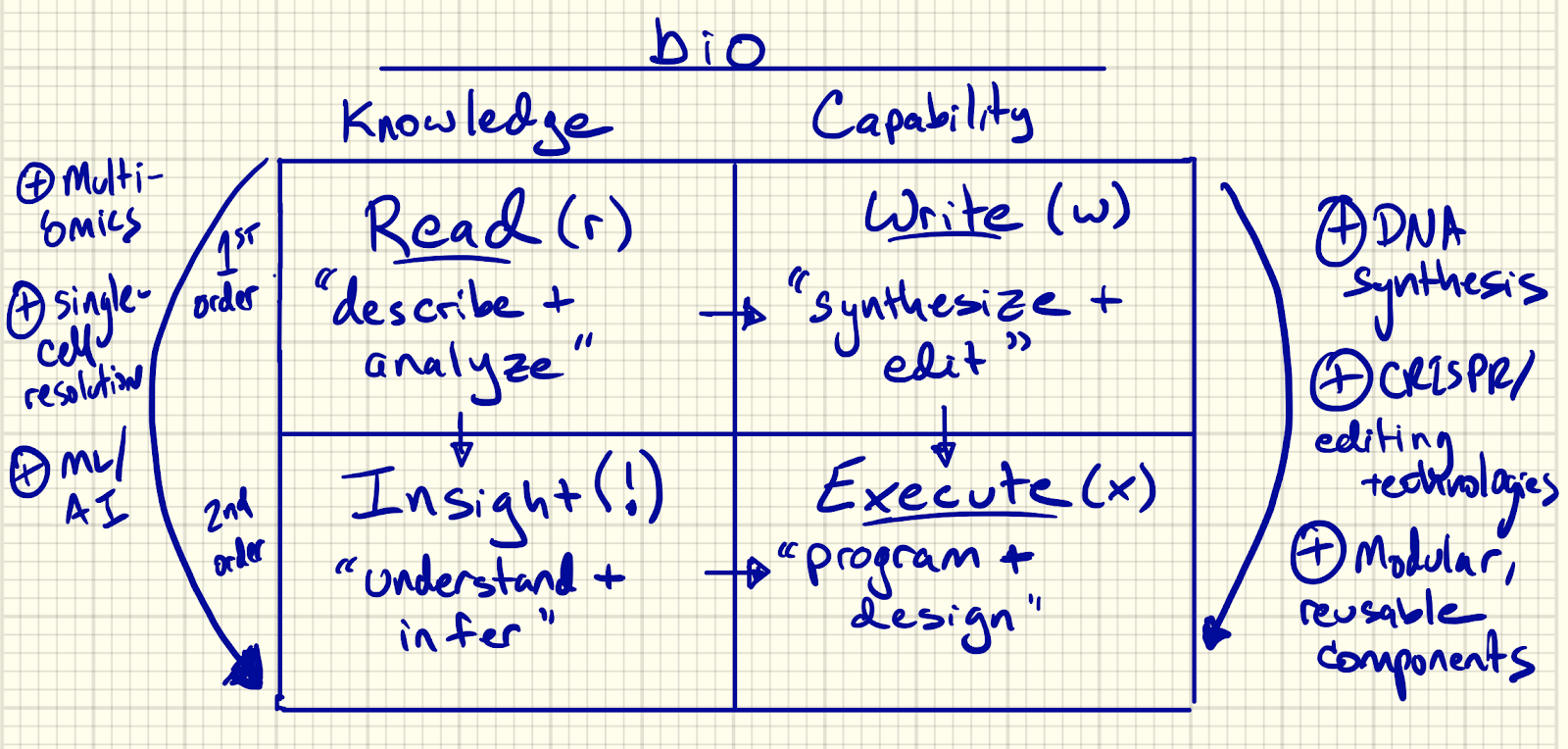Posted January 9, 2020
Editor’s Note: This post first appeared as an edition of the a16z Bio Newsletter. To sign up for this and other a16z newsletters, please visit our subscription center here.
Biology today is where information technology was 50 years ago. Our ability to engineer biology will change how we diagnose, treat, and manage disease; create new medicines and therapeutics; how we access, pay for, and deliver healthcare… and how it will eat, er, change our world (here’s our manifesto). Here’s our guide to the why, what, where, and how science is becoming engineering.
Foundations and frameworks
- Programming Biology: Read (r), Write (w), Execute (x) In one visual, what happens when we combine this new world of knowledge and capabilities.
- Eroom’s Law Information technology has Moore’s Law, but bio has had the reverse (for worse). To us, that means opportunity — this video shares why.
- AI is driving discovery Even how we do science itself is changing, thanks in large part to AI industrializing knowledge discovery, as described in this video.
- Programming medicine From the cell to the gene to the living microbiome, our ability to “program” medicine changes how we design drugs, therapies, and ways to treat disease. This presentation shares the evolution of what medicine is becoming.
Tools and Knowhow
- How to engineer biology Just because biology involves complex systems doesn’t mean we can’t design and engineer the tools we use to manage it; borrowing from engineering, here are some key principles.
- And how to reverse engineer it, too The idea of reverse engineering biology seems like a paradox; how could we ever reverse engineer anything for which we didn’t “invent” the original technology? We need key tools and concepts from both worlds.
- Wherefore synthetic biology? Synthetic biology — aka “synbio” — is arguably the OG field where engineering and bio first met. How did the field come to be, where are we today, and where are we going? Listen to this podcast with one of the pioneers of the field.
- So you wanna build a software company in healthcare? It’s not just theories but putting it all into practice… and then on top of it, building a company that can scale. Why is this so damn hard? This podcast shares specific things healthcare founders can and should do.
Broader Landscape and Systems
- Pharma: This wide-ranging conversation with the CEO of Novartis debates what’s science vs science fiction when it comes to science becoming engineering — how do these questions play out in a huge company within a complex industry?
- Manufacturing: How will new kinds of medicines be manufactured, scaled, delivered? Field notes from the Cell and Gene Meeting on the Mesa on how entrepreneurs, biopharma leaders, and contract organizations are doubling down and overcoming challenges in getting new medicines to the most patients.
- Care Delivery: Not only is software eating care delivery (this video shows where and why), new technologies like pharma delivery drones and others are starting to solve the last mile.
- Policy: With all the recent statements against germline editing and regulatory moves around gene therapy kits and more (and meanwhile, clinical trials for CRISPR are finally coming of age) — what’s hype, what’s real; where are we now?
- Innovation ecosystems: There used to be two very different Boston and Silicon Valley company building models for bio/tech. Now there’s a new breed of multidisciplinary founders — and an entirely new model for the next generation of bio startups: “born in the wild vs. bred in captivity”.

